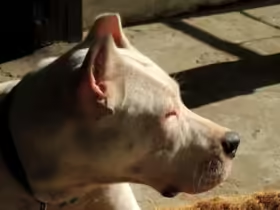Creating a safe outdoor space for your cat is an excellent way to enrich their life while keeping them secure from potential dangers. Outdoor enclosures, also known as “catios,” provide cats with the joys of the outdoors—such as fresh air and natural sunlight—without the risks of roaming freely. This guide will walk you through the steps of designing and setting up a safe and engaging outdoor space for your feline friend.
1. Why Create an Outdoor Space for Your Cat?
Enrichment and Exercise
Outdoor spaces allow cats to experience new sights, sounds, and smells, which stimulate their senses and provide physical exercise. This can help reduce boredom and destructive behavior.
Safety
A controlled outdoor environment prevents your cat from encountering hazards like traffic, predators, or other animals. It also minimizes the risk of your cat getting lost or injured.
Health Benefits
Exposure to natural sunlight can improve your cat’s overall health, supporting their vitamin D levels and promoting a more active lifestyle.
2. Planning Your Cat’s Outdoor Space
Assess Your Space
Start by evaluating the area where you plan to set up the outdoor space. Consider factors like available space, access points, and proximity to other pets or hazards.
Determine Size and Design
Decide on the size and design of the enclosure based on your cat’s needs and your available space. The size can range from a small balcony enclosure to a larger backyard catio.
Budget Considerations
Consider your budget for materials and construction. DIY options can be cost-effective, but there are also pre-made catios available if you prefer a ready-made solution.
3. Choosing the Right Materials
Enclosure Material
Use durable and weather-resistant materials for the enclosure. Options include:
- Metal Mesh or Wire: Provides a strong barrier and visibility.
- Wood: Ideal for structural frames, but it must be treated to withstand weather conditions.
- PVC: Lightweight and easy to assemble, often used in DIY projects.
Flooring
Choose flooring that is easy to clean and comfortable for your cat. Options include:
- Grass Turf: Soft and natural but may require regular cleaning.
- Outdoor Rugs or Mats: Easy to clean and provides a comfortable surface.
- Pavers or Concrete: Durable and low maintenance.
Roof and Shelter
Ensure the outdoor space has adequate cover to protect your cat from the elements. Consider:
- Roofing Materials: Use materials like corrugated plastic or shingles to provide shelter from rain and sun.
- Shelter Areas: Include cat houses or platforms where your cat can retreat for shade and comfort.
4. Designing the Enclosure
Access Points
Provide easy access for both you and your cat. Options include:
- Cat Flaps: Allows your cat to enter and exit freely while keeping other animals out.
- Human Doors: For you to access the enclosure for cleaning and maintenance.
Perches and Platforms
Install various levels, platforms, and perches to encourage climbing and exploration. Cats love vertical space and high vantage points.
Interactive Elements
Add stimulating features such as:
- Cat Trees: For climbing and scratching.
- Toys: Hanging toys or balls to keep your cat entertained.
- Scratching Posts: To help maintain their claws and prevent damage to your furniture.
5. Ensuring Safety
Secure Fencing
Ensure that the enclosure is securely fenced to prevent escape. The fencing should be tall and sturdy, with no gaps or weak points.
Predator Protection
Install additional barriers if you live in an area with potential predators, such as raccoons or hawks. Consider adding a top cover to prevent birds of prey from swooping in.
Avoid Toxic Plants
Choose safe plants for the enclosure. Avoid toxic plants such as lilies, philodendrons, and azaleas. Opt for cat-safe options like catnip, cat grass, or non-toxic herbs.
Regular Maintenance
Regularly check the enclosure for wear and tear. Repair any damage promptly to maintain a safe environment for your cat.
6. Introducing Your Cat to the Outdoor Space
Gradual Introduction
Introduce your cat to the new space gradually. Start with short periods of time and gradually increase the duration as your cat becomes more comfortable.
Supervised Time
Initially, supervise your cat while they explore the enclosure. This ensures they adapt to the space safely and helps you identify any issues.
Positive Reinforcement
Use treats and praise to encourage your cat to explore and enjoy their new outdoor space. This helps create positive associations with the area.
7. Enhancing the Experience
Seasonal Considerations
Adapt the space for different seasons. For instance, add extra insulation or heating during colder months and ensure ample shade and cooling options during hot weather.
Interactive Play
Spend time interacting with your cat in the enclosure. Play games and provide enrichment to keep their experience engaging and enjoyable.
Socialization
If you have multiple cats, ensure that the space allows for socialization and that all cats can comfortably coexist. Provide separate areas if needed to prevent territorial disputes.
8. Conclusion
Creating a safe outdoor space for your cat is a rewarding project that enhances their quality of life and ensures their safety. By carefully planning and choosing the right materials, you can design an enclosure that provides enrichment, exercise, and a sense of adventure for your feline friend. Whether you opt for a simple balcony setup or a more elaborate backyard catio, your cat will appreciate the opportunity to experience the great outdoors in a secure environment.
With these tips and guidelines, you’re well on your way to providing a wonderful outdoor haven for your cat. Enjoy the process and the happiness it brings to your furry companion!











Leave a Reply